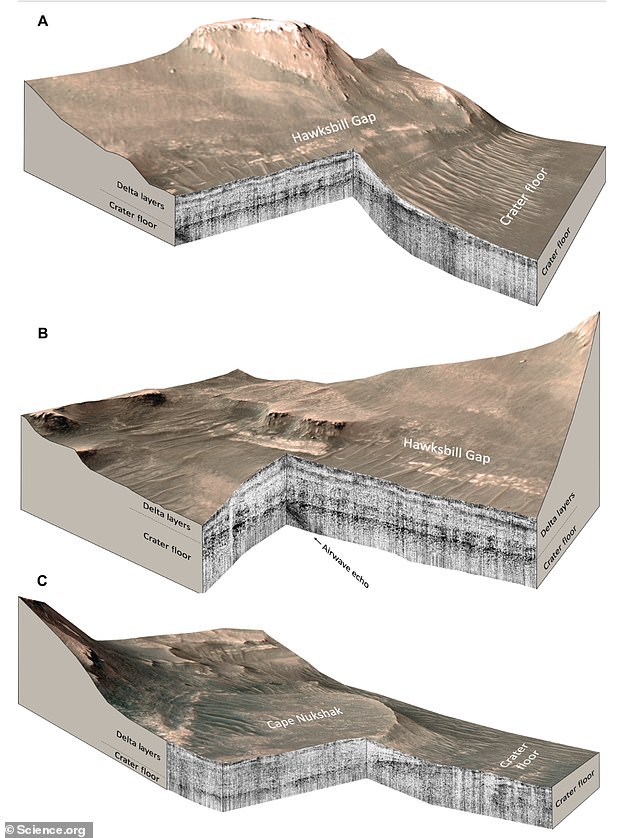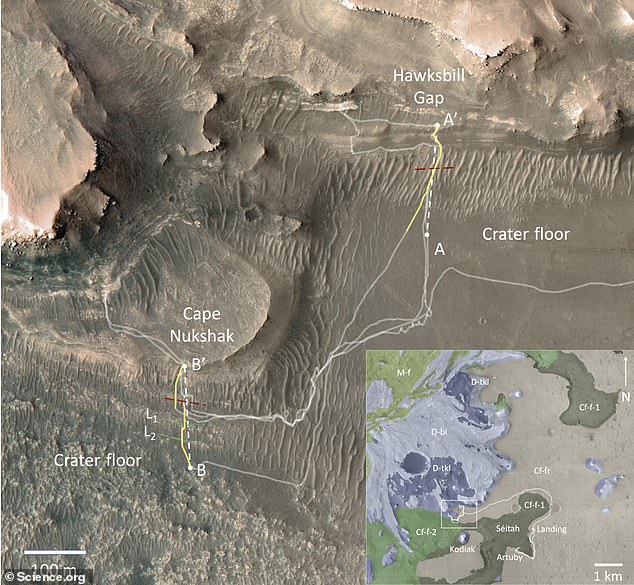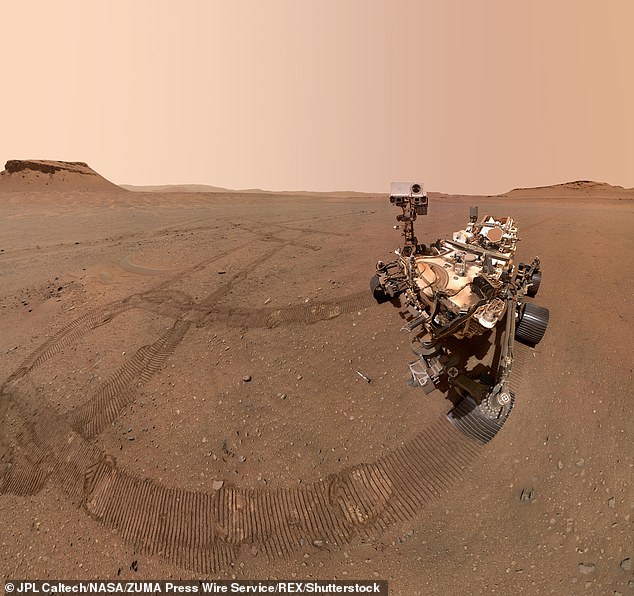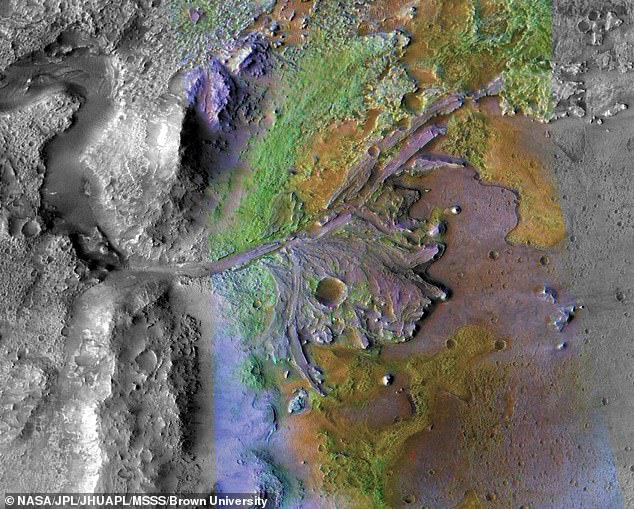NASA’s search for life on Mars is far from over: its rover has found evidence of an ancient lake that may have supported microbial life.
The Perseverance rover has been exploring Jezero Crater, where it identified water-deposited sediments, confirming speculation that the formation flowed with water three billion years ago.
The six-wheeled, car-sized machine captured images of the crater, allowing scientists to see a cross-sectional view of 65-foot rock layers that was “almost like looking at a road cut.”
The findings reinforced what previous studies have long suggested: that cold, arid and lifeless Mars was once warm, wet and perhaps habitable.
The Perseverance rover has been exploring Jezero Crater (pictured) where it identified sediments deposited by water, confirming speculation that the formation flowed with water three billion years ago.
Scientists chose Jezero Crater for the rover mission because they had previously found a sample of water-rich minerals in the basin.
The Mars Reconnaissance Orbiter, which orbits the Red Planet, has also revealed that the crater contains clays that only form in the presence of water.’
However, the team said recent evidence from Perseverance shows that there was water flowing in the basin.
The findings were discovered using Perseverance’s instrument that shoots radar waves beneath the Martian surface at 10-centimeter intervals and measures reflected pulses from depths of about 65 feet below the surface.
The scientists were able to see to the deep base of the sediments and found two distinct periods of sediment deposition sandwiched between two periods of erosion.

The findings were discovered using Perseverance’s instrument that shoots radar waves (black and white) beneath the Martian surface at 10-centimeter intervals and measures the reflected pulses from depths of about 65 feet below the surface.
The team from the University of California (UC) – Los Angeles and the Norwegian University of Olso noticed that the crater floor beneath the delta was not uniformly flat, which could only mean that water erosion had occurred before the deposition of the lake sediments.
‘The radar images show that the sediments are regular and horizontal, like the sediments deposited in lakes on Earth. The existence of lacustrine sediments was already suspected in previous studies, but this research has confirmed it,” the researchers reported in the statement.
A second period of deposition occurred when fluctuations in lake level allowed the river to deposit a broad delta that once extended into the interior of the lake, but which has now eroded closer to the river’s mouth.
First author David Paige, a professor of Earth at UCLA, said: “The changes we see preserved in the rock record are driven by large-scale changes in the Martian environment.
“It’s great that we can see so much evidence of change in such a small geographic area, allowing us to expand our findings to the scale of the entire crater.”

Scientists chose Jezero Crater for the rover mission because they had previously found a sample of water-rich minerals in the basin.

Perseverance launched on July 30, 2020, taking with it its traveling companion, the Ingenuity helicopter. Perseverance landed at the Jezero base on February 18, 2021, with the mission of finding ancient signs of life inside the 820-foot-deep crater.
The discovery was made while Perseverance traveled across the crater floor between May 10 and December 8, 2022.
The rover was headed for an adjacent expanse of braided sedimentary formations that resemble, from orbit, the river deltas found on Earth.
“From orbit we can see a lot of different deposits, but we can’t say for sure whether what we’re seeing is their original state or whether we’re seeing the conclusion of a long geological history,” Page said of the hovering Mars orbiter. about the Martian world.
“To know how these things formed, we need to look beneath the surface.”
Perseverance launched on July 30, 2020, taking with it its traveling companion, the Ingenuity helicopter.
Perseverance landed at the Jezero base on February 18, 2021, with the mission of finding ancient signs of life inside the 820-foot-deep crater.
While the rover is still alive and well, Ingenuity now lies in the dusty landscape after an accident that damaged “one or more” of its blades.
The small helicopter took off on January 18 but lost contact with the command team and when communication was recovered, one of the ship’s blades showed damage.
Ingenuity was originally designed to perform up to five experimental test flights over 30 days when it first landed in 2023.
But the $85 million helicopter exceeded expectations with 72 flights and flew more than 14 times farther than planned, logging more than two hours of total flight time.
Data showed that the helicopter reached a maximum altitude of 40 feet and hovered for 4.5 seconds before beginning its descent at a speed of 3.3 feet per second on its final fatal flight.


